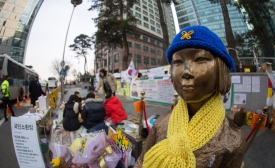japan
This month, the United States and Japan are celebrating more than 50 years of cooperation in agriculture.

YOKOHAMA, March 11 – The photo that spread across the top of page one of this morning’s Yomiuri Daily newspaper was dramatic: a group of people, obviously in distress, probably in mourning.
In a newspaper in the U.S., it could have been a photo of the aftermath of large-scale death in Haiti, Nigeria or Chile. But these individuals were clearly Japanese. What disaster were they commemorating?
Toyota not only had a special place in Japan in terms of the country's identity of quality craftsmanship, it will have a short-term impact on Japan's reputation and economic reverberations in its manufacturing sector.

A discussion of Japanese Foreign Minister Katsuya Okada's apology for Japan’s colonial occupation of Korea during World War II.
Now that the big Asia trip is history, it’s natural to judge it on the basis of known results from its biggest portion — Obama’s three days in China. For the American president, there were no obvious breakthroughs on exchange rates or trade, climate or human rights, so maybe this visit was not the most successful. On the other hand, viewed in the context of America’s recent history with East Asia, there was a certain welcome absence of drama. Expectations were managed, there was no brinkmanship. Maybe that could be considered an achievement.
An overseas trip by a U.S. president is always costly, logistically challenging, and full of colorful backdrops. President Obama’s trip to Japan, Singapore, China and Korea is no exception. If anything, there will be more excitement than usual, since it is his first trip to the region as President and there is still tremendous foreign public interest in this appealing, young, intelligent leader, his inspiring speeches, and his photogenic wife.
Why, then, is the mood so downbeat among the U.S. press corps — the “traveling press” — as they begin covering this trip?







